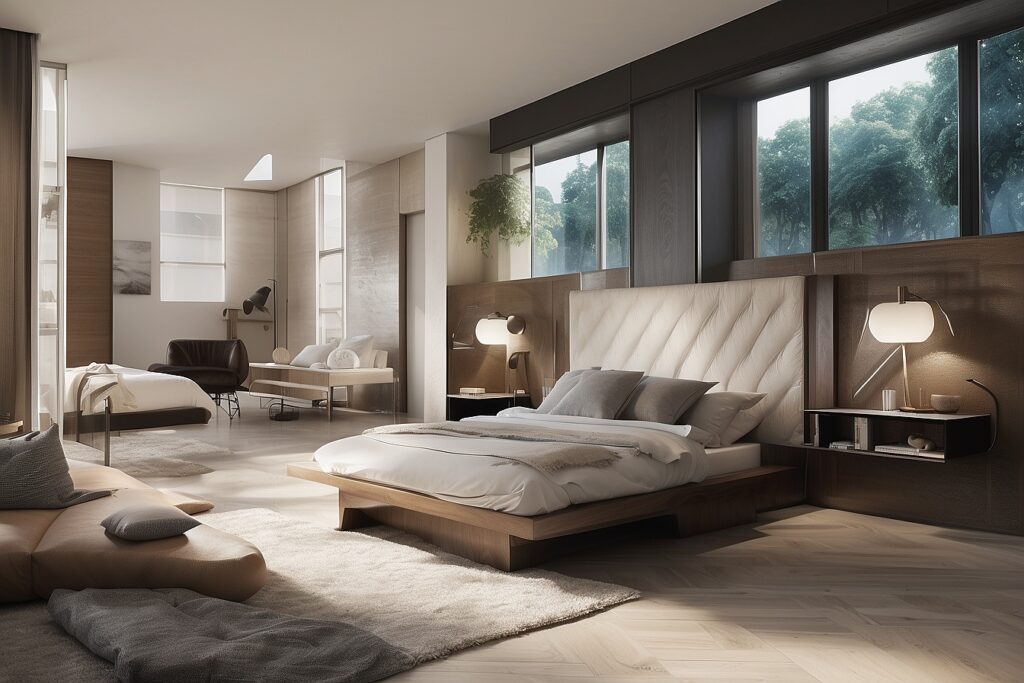“Ed Ng Discusses Timeless Design and Functional Importance at AB Concept”

Since establishing AB Concept in 1999, Ed Ng and Terence Ngan have been instrumental in shaping the design landscape of hotels, residences, dining establishments, and retail venues across the globe.
As both life and business partners, they’ve extended their creativity to furniture design, such as the innovative Hagu Chair for Gebrüder Thonet Vienna, as well as lighting projects for Lasvit in Prague and carpet designs for Tai Ping in Hong Kong.
Their firm, known for blending architectural precision with bespoke craftsmanship, has become synonymous with sophisticated design solutions.
Despite the firm’s home base in Hong Kong, the duo now resides near Tokyo, where they manage projects spanning various continents. Their collaborative effort resulted in the publication of “The Art of Timeless Spaces,” a visually captivating book released recently.
In an email exchange with Mansion Global, Ng delved into the essence of “timeless” design, his observations on luxury spaces, and even shared a personal desire for a larger closet space.
Mansion Global: Your book, titled “The Art of Timeless Spaces,” suggests a focus on enduring design. What elements contribute to creating a space that stands the test of time?
Ed Ng: The concept of “timelessness” is rooted in an ethereal quality that transcends trends. It embodies a space that evokes a lasting emotional resonance, achieved through a delicate balance of functionality and aesthetics. Timeless design is not confined to fleeting fads but rather reflects a harmonious integration of form and purpose, ensuring its relevance and allure for generations to come.
How have design preferences evolved since the inception of your business?
When AB Concept was established a quarter-century ago, minimalist principles dominated the design landscape. Embracing this ethos, we discovered the elegance of simplicity and the significance of negative space. However, our creative journey led us beyond the boundaries of minimalism. Over the years, we’ve witnessed a cyclical evolution of trends, from open floor plans and terrazzo to pastel palettes and diverse architectural styles spanning from futuristic to Mid-Century Modern.
The recent global shift towards remote work during the pandemic has spurred a renewed emphasis on adaptable living spaces. There’s a growing penchant for multifunctional areas, characterized by a fusion of styles and an appreciation for sustainable materials and artisanal craftsmanship. Lighting, in particular, has emerged as a pivotal element, balancing utilitarian function with expressive design statements.
Could you provide insights into your personal living space? What aspects or rooms do you particularly cherish?
Our residence, Itsu Sho Sha, nestled in the serene Karuizawa hills, offers a tranquil retreat just an hour away from Tokyo via the bullet train. Comprising four distinct buildings resembling a quaint village amidst lush forestry, our home represents the culmination of our passions and ideals. With unparalleled creative liberty, Terence and I meticulously orchestrated every facet, from the interiors to the artwork, shaping it in accordance with our envisioned lifestyle. Completed recently, it remains an evolving expression of our lives, where each element reflects our devotion to craftsmanship and individuality.
How has your upbringing in Hong Kong influenced your design philosophy?
Growing up in Hong Kong has profoundly shaped my approach to design. The city’s vibrant energy, diverse cultural tapestry, and blend of Eastern and Western influences have instilled in me a profound appreciation for harmony, functionality, and a multicultural design ethos.
If you could redesign any space globally, which would it be and why?
I would choose my pied-à-terre in Milan. Initially designed for short stays, I underestimated the allure of the city and found myself spending more time there. This realization prompted a desire for a redesign to better align with my extended stays. Specifically, I envision incorporating a larger closet to accommodate the city’s dynamic lifestyle and enhancing the kitchen and dining area to indulge my passion for cooking during longer visits.
Are there any plans to expand projects into the United States? How do you anticipate your approach being received by American clients?
We are certainly eager to extend our design projects into the U.S. Currently, we are collaborating on 50 West 66th Street with Extell, a sophisticated 70-story condominium tower nestled between Lincoln Center and Central Park in New York City. With prior projects spanning nearly 40 cities across Asia, Europe, and the Middle East, each endeavor presents a fresh and unique experience.
In your view, what constitutes luxury?
For me, luxury in design is synonymous with authenticity. It revolves around the creation of spaces that resonate with our individual identities, fostering a profound sense of harmony and personal fulfillment.




Thanks for sharing. I read many of your blog posts, cool, your blog is very good.